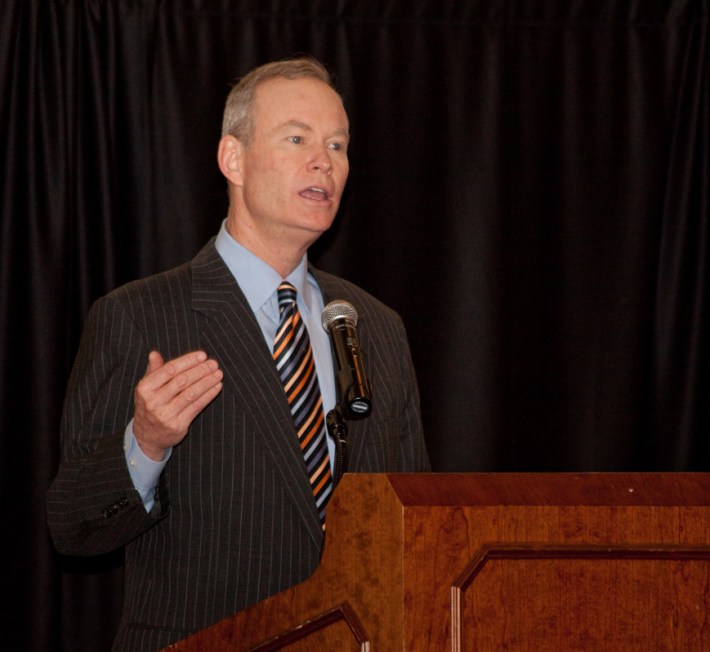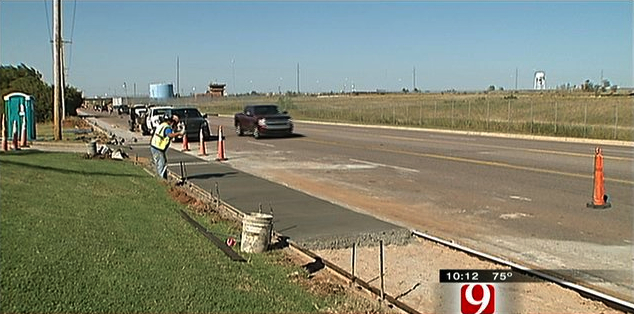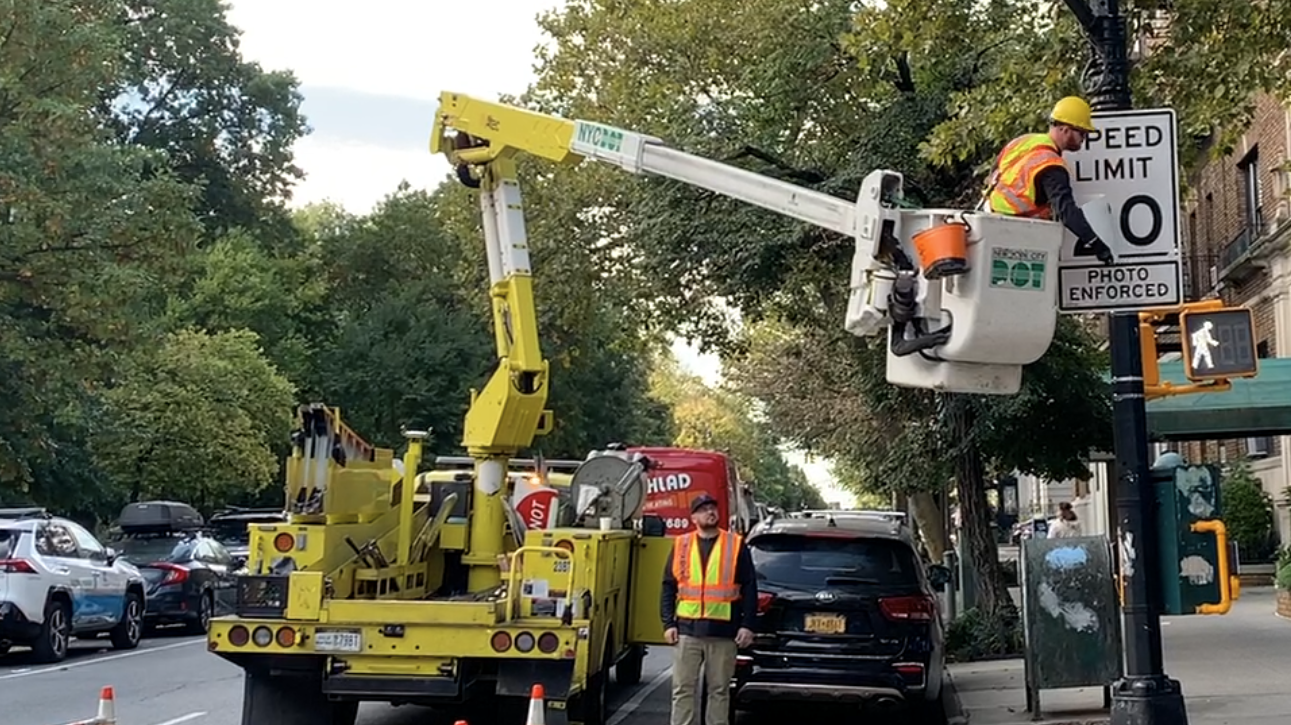Part One of this interview was posted yesterday.
Oklahoma City Mayor Mick Cornett (R) has made it his mission to make his city healthier and less obese, in part by improving its walkability. The city lost a million pounds during his weight-loss campaign -- and then they took a freeway out of the middle of downtown and overhauled its built environment.

I interviewed Mayor Cornett last week when he was in Washington, DC for the annual meeting of the United States Conference of Mayors. In the first installment, posted yesterday, Cornett described the excitement among city officials when the rules changed and they were asked to think outside the car-centric box. He said they built sidewalks and parks and bike trails with locally-raised funds, even over the objections of the fire and police unions. And while he welcomes federal money for projects like these, he's at peace with other Oklahomans who see things differently -- though he worries that less federal funding will result in less equality among cities.
So now you're all caught up. Here's Part Two.
Tanya Snyder: It seems like there are more and less successful ways of talking about [livable cities] with different people. You have a pretty conservative constituency. Does it hurt the cause that Michelle Obama is out in front on obesity, and does it hurt the cause that walkability is associated with sustainable development, is associated with Agenda 21, is associated with climate change initiatives -- what you’re doing is nonpartisan, you’re just trying to get people fit and healthy.
Mayor Mick Cornett: There is some pushback about -- as you mentioned, Agenda 21 and anything that comes out of the White House. But at the end of the day, people elect mayors to get things done. You might elect a Congressman to go up and stop something. But you don’t elect a mayor to stop things form happening. You elect an executive branch person -- a mayor, a governor, a president -- to do things.
I close with this: “We’re creating a city where your kid and grandkid are going to choose to live.” And they know it’s true.
So I’ve never let that slow me down. I will say that one secret to our success is that we’ve been able to convince the suburbanite that their quality of life is directly related to the intensity of the core. And so they have continually passed initiatives to support inner-city projects, sometimes at the expense of the suburbs.
TS: How did you do that?
MC: Here’s what I do. I try to win an intellectual argument. I stand toe-to-toe with a lot of retired suburbanites who don’t like downtown, don’t like me, are tired of funding taxation. I’m serious, they have more negativity than you could possibly imagine.
And when I’ve lost on every turn and every argument in this debate that takes place in neighborhood after neighborhood I close with this: “We’re creating a city where your kid and grandkid are going to choose to live.”
And they know it’s true. Because in Oklahoma City, my generation left. If you had an advanced degree, there wasn’t a job for you. And so people left. They’re now in Houston and Dallas and New York and Washington, DC and Tokyo and all sorts of great places. We raised a lot of really smart people. They’re gone.
Very talented young people left to go get a job somewhere else. And now they’re coming back. Our population increase is double its traditional average. We used to grow about 1 percent a year and now we’re well over 2-percent-a-year population growth. And our unemployment rate is the lowest in the country -- 4.5 percent.
So how do you explain that? How do you have all these people coming, over a thousand people a month to the city, another thousand in the metro area, yet our unemployment rate remains the lowest in the country by a considerable amount?
There’s jobs there. It’s economic development. These highly educated twenty-somethings are flocking to the city and the job creators and entrepreneurs are just growing the economy exponentially. They see all that and they realize quality of life is really the key to economic development for a city. We didn’t invent that but we were on the front end of figuring that out. We figured that out 20 years ago.
TS: You say people move to Oklahoma City not just from your suburbs but from California, from the east coast. People think of that migration going the other way. What do you attribute that to?
MC: I attribute it to quality of life. Quality of life means different things to different people. We have very affordable housing, so a young person right out of college can buy a house in Oklahoma City. We have virtually no traffic congestion in this city. We have an abundance of fresh water and clean air.

So, you talk about quality of life, you’ve got to have things like sports; we have a major league NBA team now, we have a very large commitment to the arts. You have to have it all. But the quality of life in Oklahoma City is amazing when you compare it to the east and west coasts. What people take for granted on the east and west coasts -- long commutes, long lines in traffic, unaffordable housing -- in Oklahoma City, none of that exists!
And so, when they start seeing how far their housing dollar goes, and the quality of life that they can have there, it’s just easy to live in Oklahoma City. You don’t put up with all the hassles of other places.
TS: Congestion is another thing I wanted to ask about. It’s easier to make the argument for alternatives to the single-occupancy vehicle when you can tell every day on your commute that driving in a single-occupancy vehicle is not sustainable. It’s not working for you. It’s actually less convenient; it’s more expensive. That’s not true in your city. Driving probably is the easiest and quickest and most convenient way to get around. Does that make it harder to make the sale?
MC: Well, yeah. So our successes are very impressive to us. In the grand scheme of things, most people are still moving to the suburbs as opposed to downtown. Most people still choose a 10- or 15-mile journey to work -- which only takes 10 or 15 minutes.
We virtually had no downtown housing 10 years ago. The only people we had living downtown were people in jail. We had fewer than a thousand, probably, living downtown. And the demographics of the downtown culture have completely changed. I live downtown.
TS: Do you know how many people live there now?
MC: Yeah, it’s a couple thousand. But there’s probably a thousand units under construction right now. So like I say, for us, it seems like there’s a lot of people moving downtown. But in the grand scheme of things, in a city with 610,000 people and a thousand new people a month, it’s still just a small percentage.
But I remember talking to [former Denver mayor, current Colorado governor] John Hickenlooper about Denver, because I thought his city had conquered this great inner city migration, and he told me the same thing. He said 90 percent of the people are living in the suburbs. It just looks like a lot of people.
TS: Your 2 percent growth rate though -- is that in the inner city?
MC: Well that’s in the city limits. Our city limits are very large. It encompasses 620 square miles.
TS: You rebuilt I-40 and integrated it into the city in a way that worked for you. A lot of urbanists think you need to get freeways out of cities, and it seemed like you used it as a gateway to get people to notice the downtown. How did that work?
MC: We moved I-40 from downtown just a few blocks to the south, and used that as an opportunity to create a new park and a new boulevard along the old route. It had to be done. So how’s the city going to react to it? We think we reacted very positively to it. We used it as an opportunity to redefine downtown.
TS: You talked about the connection between jobs and sidewalks and the riverfront park and things like that. You’ve said that people don’t follow jobs anymore; jobs follow the people. Is that what you’ve found in Oklahoma City -- that people aren’t necessarily moving to where they can find a good job, they just move to where they want to live?
MC: We learned the hard way that we were trying to attract jobs by incentivizing businesses to move to our city. What we learned is, if we create a better city for us, people will move jobs to our city because they know their employees will be happy there.
Dell moved a couple thousand of jobs to Oklahoma City -- or created them; they were brand new jobs. And one of the things their guy told me was, “We spend a lot of time and energy training our employees. We can’t afford to locate a facility in a city where we don’t think they’re going to stay. They’ll leave Dell, not because they’re dissatisfied with us, but because they don’t like living there.”
So they can only afford to locate in cities that understand the quality of life element. And that validated everything we had been trying to convince ourselves was true. We didn’t really know it. We thought it was true.
We had to learn, because [20 years ago] United Airlines was looking at building a maintenance facility and we put the best incentive package on the table they chose Indianapolis, in 1992, to build this plant. And the CEO told us it was because, “We couldn’t imagine our people living in Oklahoma City.” And that changed everything.
TS: Where were you 20 years ago?
MC: I was a television sportscaster.
TS: So you weren’t part of these conversations.
MC: I wasn’t at all. I was in the media. And a few years later I became a City Hall reporter. I was a news anchor and I covered City Hall. So I was on the other side of all these things.
TS: You were on my side!
MC: Yes I was, very much!




